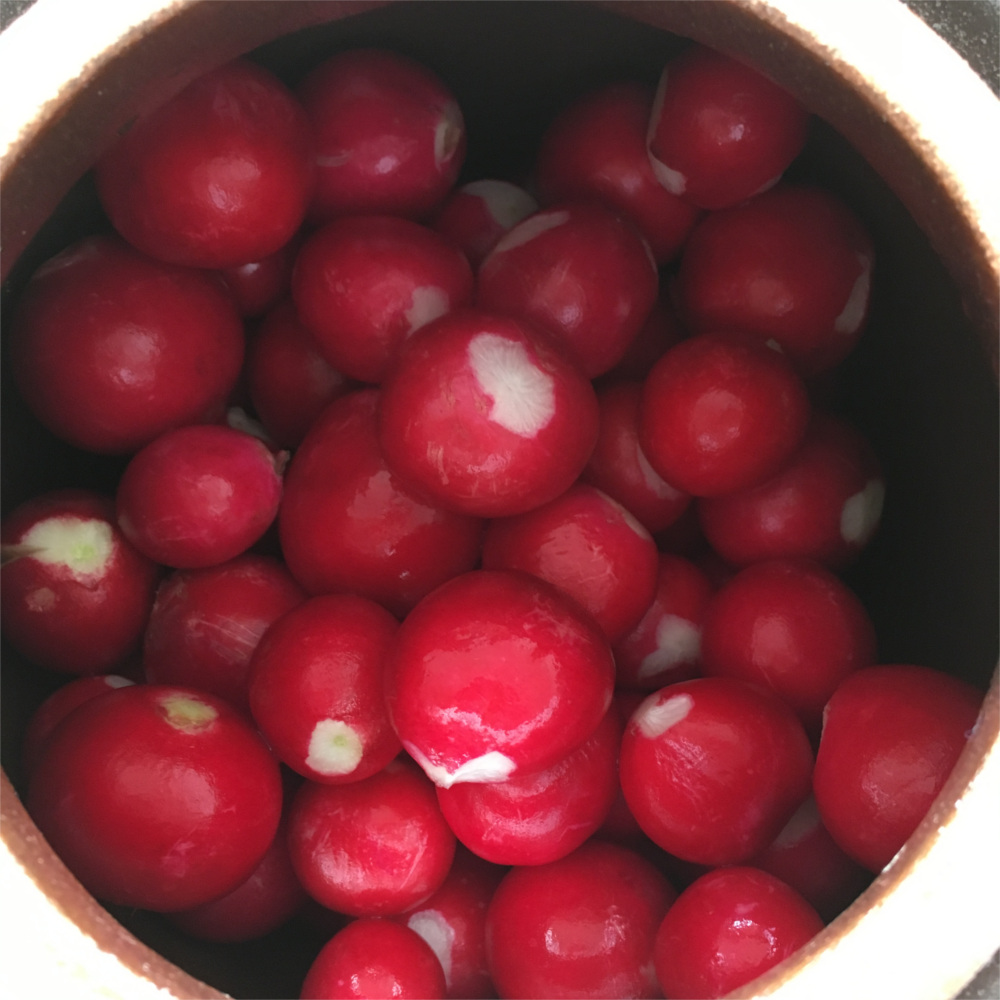Fermented Radishes – Do Not Try At Home
After moving to Erfurt, I immediately started looking for a new vegetable fermentation project. The local grocery store had radishes on sale, and I do love radishes. I grabbed four bundles and headed back to the apartment to perform the same tasks I had previously with carrots.
I targeted a 2 percent salt solution. For my 3 liter fermentation vessel, I needed 51.18 grams of salt, approximately. And, as is to be expected, I included a good amount of dill and mustard seeds. Recall that the mustard seeds are helpful in restraining the bad bacteria, and I just really like dill.
To the brine, I also included approximately 4 milliliters of calcium chloride. I have CaCl2 handy for cheese making, and it is said to help maintain the crispness of the fermented vegetable (typically cucumbers).
It is common practice to use a weight in order to ensure that the vegetable does not come in contact with the air, which would allow mold to grow. Instead, I used a bit of food-grade plastic mesh, which is sturdy enough to keep these radishes below the water level.
I filled the moat, which is built into the vessel, with some of the extra brine, covered, and let sit at room temperature until the bubbling stopped. However, life got busy, and it sat for three and a half weeks. As I transferred the contents to jars for storage in my fridge, I noticed that the red color leached from the radishes into the water. I was left with somewhat unappetizing white crunchy balls, which lost most of the sharp flavor with which I had started.
This was a fun experiment, but I am going to suggest that readers not try this one at home. The final product is still quite delicious, but the fermentation may have actually detracted from the flavor and visual appearance. I would recommend eating radishes raw.










